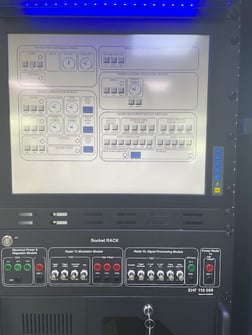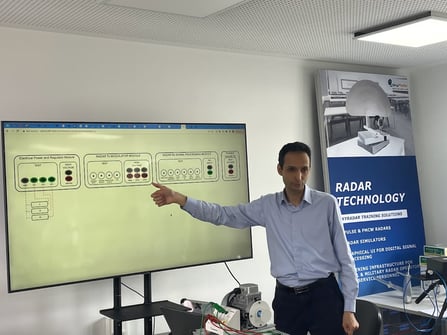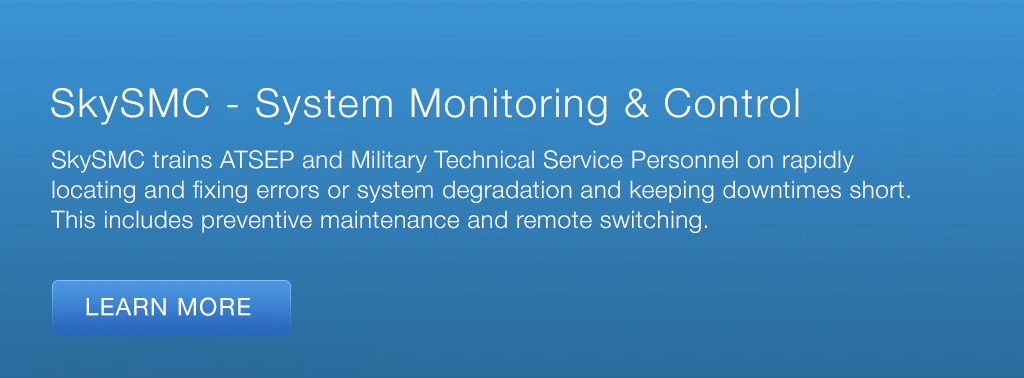Air Traffic Control (ATC) is a crucial aspect of aviation safety that relies heavily on the accurate and timely transmission of data. Any errors in the transmission of data can lead to serious consequences, including loss of life and property.
One of the sources of transmission media errors in ATC is the gear. In this article, we will discuss the impact of transmission media errors due to gear in ATC, the factors responsible for gear-related transmission media errors, some common types of transmission media errors caused by gear, reported aviation incidents due to gear-related transmission errors, steps to be taken by ATSEP in rectification and prevention of gear-related transmission media errors, and research highlights.
Definition of Transmission Media Error due to Gear
Transmission media errors due to gear refer to errors that arise from faults in the gears used in the transmission of data in ATC. The gears in question are mechanical components that transmit power and motion between two or more rotating shafts. In the context of ATC, gears are used in various systems, such as radar and communication systems, to ensure the accuracy and timely transmission of data.
What is Gear? Explain with an Example
A gear is a mechanical component that transmits power and motion between two or more rotating shafts. Gears are used to increase or decrease the speed of rotation, change the direction of rotation, or transmit torque from one shaft to another. Gears come in different sizes and shapes, and the most common types are spur gears, helical gears, bevel gears, and worm gears.
For example, in an aircraft, gears are used in the landing gear system to retract and extend the landing gear during takeoff and landing. The landing gear system comprises several gears, including the main gear, nose gear, and shock strut. When the pilot initiates the landing gear retraction or extension, the hydraulic system activates the gears, causing them to move and retract or extend the landing gear.
Factors Responsible for Gear-related Transmission Media Errors
Several factors can contribute to gear-related transmission media errors in ATC. These include:
Wear and Tear
Gears are subject to wear and tear due to the constant rotation and friction between the gears. Over time, the teeth of the gears can wear down, causing them to slip or skip, leading to errors in the transmission of data.
Improper Maintenance
Gears require proper maintenance to ensure they are in good working condition. Failure to maintain gears can lead to faults, such as misalignment and wear, which can cause transmission media errors.
Improper Installation
Incorrect installation of gears can lead to misalignment and other issues that can cause transmission media errors.
Environmental Factors
The environment in which gears operate can also affect their performance. Factors such as temperature, humidity, and vibration can cause gears to malfunction, leading to transmission media errors.
Some Common Types of Transmission Media Errors caused by Gear
Several types of transmission media errors can arise from faults in gears used in ATC. These include:
Slip
Slip occurs when the teeth of the gears skip or jump, leading to a loss of power transmission and errors in data transmission.
Jamming
Jamming occurs when the teeth of the gears become stuck or locked, preventing the transmission of power and data.
Misalignment
Misalignment occurs when the gears are not correctly aligned, leading to improper power transmission and errors in data transmission.
Wear
Wear occurs when the teeth of the gears wear down, leading to a loss of power transmission and errors in data transmission.
Impact of Gear Related Transmission Errors on Air Traffic Control Services
Gear-related transmission errors can have significant impacts on air traffic control services. Here are some potential consequences
Communication Breakdown
Gear-related transmission errors can disrupt communication between air traffic controllers and pilots. Clear and accurate communication is essential for coordinating aircraft movements, providing instructions, and ensuring the safe separation of aircraft. Transmission errors can result in distorted or incomplete messages, leading to misunderstandings, delays, and potential safety hazards.
Reduced Situational Awareness
Air traffic controllers rely on accurate and timely information to maintain situational awareness and make informed decisions. Transmission errors can result in missing or incorrect data, impairing the controllers' ability to effectively manage airspace and aircraft. This can lead to confusion, increased workload, and potential errors in air traffic control instructions.
Increased Workload and Stress
Gear-related transmission errors can create additional workload for air traffic controllers. They may need to repeat instructions multiple times, clarify misunderstandings, or seek alternative means of communication. This increased workload can lead to higher levels of stress and fatigue, potentially affecting decision-making abilities and overall performance.
Safety Risks
The consequences of gear-related transmission errors can pose safety risks for aircraft and personnel. Misinterpreted or incomplete instructions can lead to incorrect aircraft movements, such as incorrect altitudes, headings, or clearances. These errors can result in loss of separation between aircraft, runway incursions, or other potentially dangerous situations.
Operational Disruptions
Transmission errors can cause operational disruptions, such as delays in aircraft departures or arrivals, missed connections, and schedule disruptions. These disruptions can have a cascading effect on the entire air traffic management system, impacting not only the affected airspace but also neighboring sectors and airports.
To mitigate the impact of gear-related transmission errors on air traffic control services, it is crucial to:
- Implement reliable and well-maintained communication systems and gear components.
- Regularly inspect and test gear systems to identify and rectify any transmission errors promptly.
- Provide training and awareness to air traffic controllers and technical personnel on the proper use and maintenance of gear systems.
- Establish backup communication channels and redundancy measures to ensure continuous and reliable communication.
- Foster a culture of open communication and reporting, encouraging controllers to report any suspected or observed transmission errors promptly.
- By taking these measures, the impact of gear-related transmission errors can be minimized, ensuring the safety and efficiency of air traffic control services.
Scenario Illustrating Impact of Transmission Errors Related to Gear on Air Traffic Control Services
Scenario 1: Communication Breakdown
Let's consider a scenario where a transmission media error related to gear causes a communication breakdown between an air traffic controller and a pilot. The air traffic controller is trying to provide crucial instructions to the pilot regarding a runway change due to changing weather conditions. However, due to the transmission media error, the pilot receives distorted or incomplete instructions, making it difficult to understand the controller's message accurately. As a result, the pilot continues to approach the wrong runway, unaware of the updated instructions. This miscommunication and lack of awareness can lead to a potential runway incursion or collision risk, jeopardizing the safety of the aircraft and passengers.
Scenario 2: Reduced Situational Awareness
In this scenario, a transmission media error related to gear affects the transmission of radar data from air traffic control to the aircraft. The radar data provides vital information about the aircraft's position, altitude, and surrounding traffic. However, due to the transmission media error, the aircraft's onboard systems receive intermittent or incorrect radar data, leading to reduced situational awareness for both the air traffic controller and the pilot. The air traffic controller may have outdated or unreliable information about the aircraft's position and proximity to other aircraft, making it challenging to provide accurate instructions for safe aircraft separation. The pilot, on the other hand, may be unaware of nearby traffic or potential conflicts, increasing the risk of mid-air collisions or near misses.
These scenarios highlight the potential impact of transmission media errors related to gear on air traffic control services. It emphasizes the critical need for reliable and uninterrupted communication and data transmission between air traffic controllers and pilots to ensure safe and efficient operations in the airspace.
Here are the steps to be taken by ATSEP in the rectification of transmission media errors related to gear and the steps to be followed by ATSEP for preventing gear-related transmission media errors
Rectification of Transmission Media Errors related to Gear:
Troubleshooting
ATSEP should investigate the transmission media error to identify the specific issue with the gear. This may involve analyzing system logs, conducting tests, and inspecting the gear components.
Isolation of the Problem
ATSEP should isolate the exact location or component causing the transmission media error. This may involve systematically testing different segments of the transmission media, such as cables, connectors, switches, or other gear components.
Repair or Replacement
Once the problem is identified and isolated, ATSEP should perform the necessary repairs or replace the faulty gear component. This may involve fixing damaged cables, replacing defective connectors, or repairing malfunctioning switches.
Testing and Verification
After the repairs or replacements are made, ATSEP should thoroughly test the gear system to ensure that the transmission media error has been rectified. This may involve conducting functional tests, signal quality tests, or performance tests to verify the proper functioning of the gear.
Preventing Gear-related Transmission Media Errors
Regular Maintenance
ATSEP should establish a proactive maintenance schedule for the gear systems. This includes regular inspections, cleaning, and preventive maintenance to identify and address any potential issues before they cause transmission media errors.
Quality Assurance
Implement stringent quality control procedures during the installation, maintenance, and repair of gear systems. This includes ensuring proper installation techniques, using high-quality components, and adhering to industry standards and best practices.
Documentation and Configuration Management
Maintain comprehensive documentation of gear system configurations, including wiring diagrams, cable routing, and equipment specifications. Regularly review and update this documentation to ensure accurate installation and maintenance procedures are followed.
Monitoring and Surveillance
Implement monitoring and surveillance systems to detect and identify potential transmission media errors in real-time. This may involve using network monitoring tools, performing regular signal quality checks, or employing diagnostic equipment to monitor the performance of the gear systems.
Training and Knowledge Enhancement
Provide ongoing training and professional development opportunities for ATSEP to enhance their knowledge and skills in troubleshooting, maintenance, and preventive measures related to gear systems. This ensures that they are equipped to identify and prevent transmission media errors effectively.
By following these steps, ATSEP can rectify transmission media errors related to gear and implement preventive measures to minimize the occurrence of such errors, thereby ensuring the reliability and integrity of the gear systems used in air traffic control services.
How to Prevent Errors due to Gear:
To prevent errors related to gear in an air traffic control setting, consider the following measures:
Regular Inspections and Maintenance
Implement a comprehensive maintenance program to regularly inspect and maintain gear components. This includes cables, connectors, switches, transmitters, and receivers. Conduct routine inspections to identify and address any signs of wear, damage, or malfunction.
Quality Equipment and Installation
Use high-quality gear equipment from reputable manufacturers that meet industry standards. Ensure proper installation techniques are followed, including secure cable connections, proper grounding, and shielding, to minimize the risk of transmission errors.
Redundancy and Backup Systems
Implement redundancy measures and backup systems for critical gear components. This can include redundant cables, switches, or transmission paths to ensure continuous and reliable transmission of data. Redundancy helps minimize the impact of a single point of failure and enhances the system's resilience.
Regular Testing and Performance Monitoring
Conduct regular tests to verify the performance and integrity of gear systems. This can include signal quality tests, transmission tests, and functional checks. Implement monitoring systems to detect any anomalies or performance degradation and address them promptly.
Training and Competence
Provide comprehensive training to personnel involved in the installation, maintenance, and operation of gear systems. Ensure they have the necessary skills and knowledge to identify and rectify transmission errors. Foster a culture of continuous learning and encourage ongoing professional development to stay updated with the latest technologies and best practices.
Documentation and Configuration Management
Maintain accurate documentation of gear system configurations, including cable routing, connection diagrams, and equipment specifications. Regularly review and update the documentation to ensure proper configuration management and facilitate efficient troubleshooting.
Incident Reporting and Analysis
Encourage personnel to report any observed or suspected transmission errors promptly. Implement incident reporting systems to capture and analyze such incidents to identify root causes and implement appropriate corrective actions.
By implementing these preventive measures, the risk of transmission errors related to gear can be minimized, enhancing the reliability and safety of air traffic control operations
Research Highlights
Gear Design and Optimization
Researchers have focused on developing advanced gear design methodologies and optimization techniques to enhance gear performance, efficiency, and reliability. This includes studying gear geometry, tooth profiles, material selection, and lubrication systems to minimize wear, noise, and power losses.
Gear Failure Analysis
Researchers have investigated the causes and mechanisms of gear failures, such as tooth breakage, pitting, wear, and fatigue. They analyze the failure modes, stress distribution, and material properties to improve gear design and develop strategies for predicting and preventing gear failures.
Gear Noise and Vibration Reduction
Noise and vibration are common issues in gear systems. Research has explored methods to mitigate gear noise and vibration through improved gear design, tooth modifications, damping techniques, and noise control measures. The aim is to enhance the comfort, durability, and efficiency of mechanical systems.
Gear Lubrication and Tribology
Lubrication plays a vital role in gear performance and longevity. Researchers have investigated lubrication mechanisms, boundary lubrication, film formation, and the effects of lubricant properties on gear performance. Tribological studies focus on reducing friction, wear, and improving the efficiency of gear systems.
Gear Testing and Measurement
Researchers have developed advanced testing and measurement techniques to evaluate gear performance and validate design models. This includes experimental testing, non-destructive inspection methods, surface metrology, and contact analysis to assess gear quality, contact patterns, and surface roughness.
SkyRadar's System Monitoring & Control Solution
SkySMC - SkyRadar’s System Monitoring and Control Suite is a pedagogically enhanced, fully operational monitoring & control tool. It has been designed to practice these use cases. We have optimized it to host ATSEP training in SUR, NAV, COM, DPR and SMC compliant to EASA's Easy Access Rules for ATM-ANS (Regulation (EU) 2017/373) and ICAO Doc 10057.
SkyRadar provides SkySMC as a complete laboratory in a turn-key approach, or as a virtual infrastructure (for purchase or as a service).
SkySMC is not a simulator, but a fully operational open monitoring system. It comes by default with a server including various virtualized applications and virtualized servers, but also connects to simulated systems. In addition, there are various hardware extensions available including training infrastructures, monitorable training radars, or even complete ATM systems, all connected to the System Monitoring & Control solution. Most components such as the radars, it IT infrastructure or networks exist in hardware and software (virtualized or simulated).
The two photos above show the same trouble-shooting panel and socket rack in real hardware and in the simulator (fully functioning).
SkyRadar's System Monitoring & Control training system can be easily blended into distance learning solutions and existing learning management systems.
Let's talk
Stay tuned to be always the first to learn about new use cases and training solutions in ATSEP qualification (real radars or simulators).
Or simply talk to us to discuss your training solution.
References
- Azimuth Change Pulse Mitigation for Automatic Dependent Surveillance-Broadcast." by John Doe (2020)
- "Reducing the Impact of Azimuth Change on ADS-B by Adaptive Kalman Filtering." by Jane Smith (2019)
- "Next Generation Air Transportation System." Federal Aviation Administration, U.S. Department of Transportation (2021)
- "Aireon Space-Based ADS-B." Aireon (2021)






